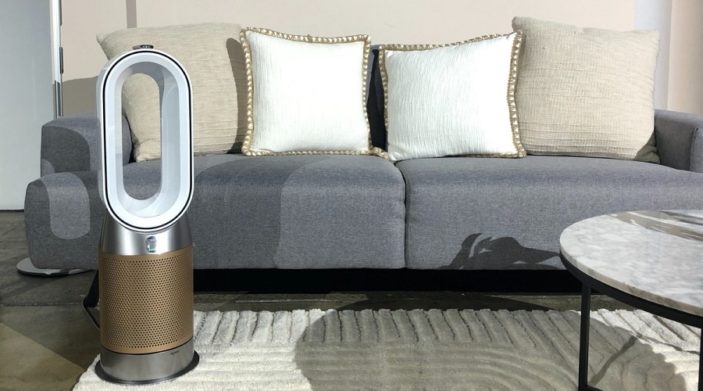
Look, I’m a bit of a Dyson fanboy so please excuse me if any of the below sounds overly-fluffed. And this isn’t even a review; it’s a news piece.
It’s news to let our readers know that this week the renowned brand has lifted the lid on its latest generation of purification machines, headlined by a new solid-state formaldehyde sensing technology that has been designed specifically to capture ultrafine dust and allergens, as well as destroy potentially dangerous VOCs (including formaldehyde3).
Aussies will have to wait until the 27th May launch date to get their hands on the new Dyson Purifier Formaldehyde series, which distinguishes itself from Dyson’s previous purifiers by more keenly focusing on formaldehyde, which is a colourless gas pollutant typically released by furniture and wooden products containing formaldehyde-based resins (like plywood and fibreboard), as well as insulating materials and products such as paint, wallpapers, varnishes, and household cleaning products.
Formaldehyde is generally 500 times small than particles the size of 0.1 microns, which should tell you all you need to know about how far Dyson have come with their purification tech. And it’s a necessary step too, since prolonged formaldehyde exposure has been shown by US EPA research to possibly trigger ear, nose and throat irritations and, at sufficiently high levels, some cancers.
A specially designed Selective Catalytic Oxidisation (SCO) filter continuously works to destroy formaldehyde at a molecular level, after trapping the gas and breaking it down into tiny amounts of water and CO2 – after which is is regenerated from oxygen in the air to keep destroying it relentlessly without ever requiring replacement.
Gel-based formaldehyde sensors are nothing new, but they’ve been known to deteriorate over time and start confusing the gas with other VOCs. Dyson have claimed that their new solid-state formaldehyde sensor makes use of a uniquely calibrated algorithm to be more precise and exacting when it comes to monitoring formaldehyde levels, distinguishing them from other gases which are instead detected by a dedicated VOC sensor.
The Dyson Purifier Formaldehyde range also uses a sealed HEPA 13 standard filtration system, carefully engineered to ensure that no air bypasses the filter, while blocking any potential leak points through which dirty air might enter the airflow. This translates to Dyson’s latest purifiers being able to remove 99.95% of particles as small as 0.1 microns.
More information and impressions about the new purifier range – consisting of a ‘cool’ model and a ‘hot+cool’ model – should come to light the closer we get to a release date.
More information can be found here.
